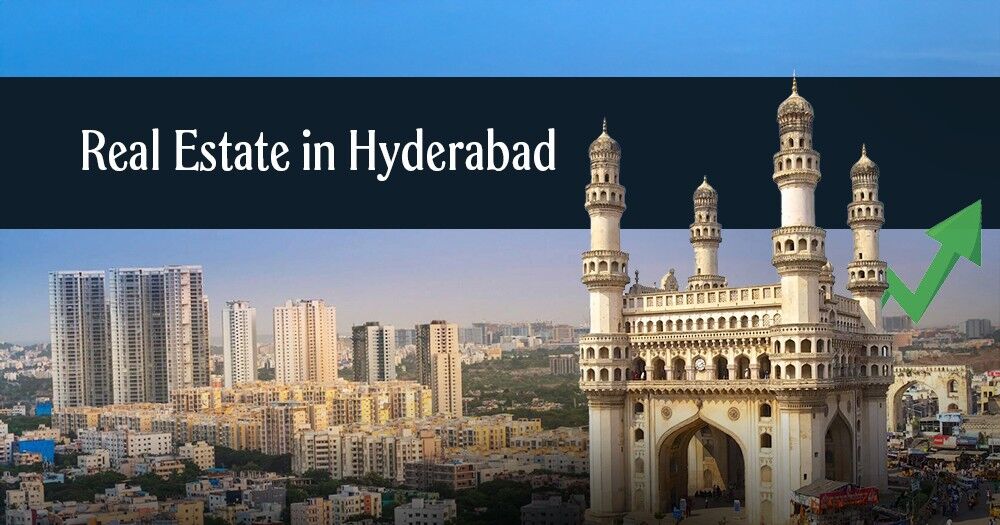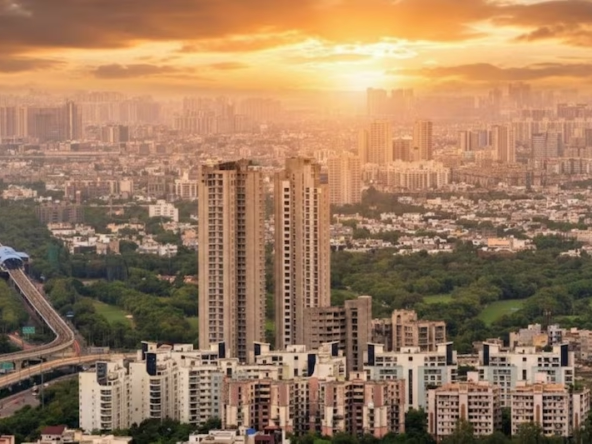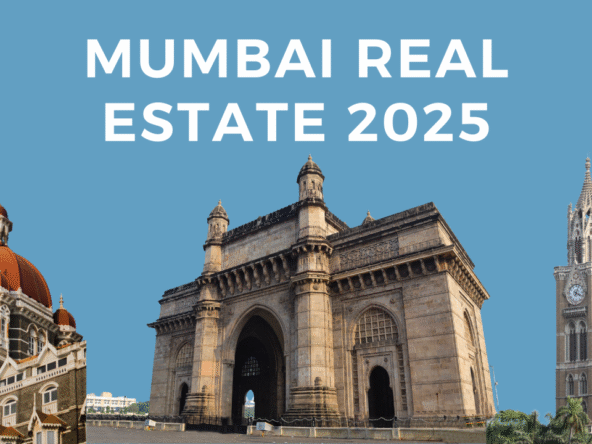Over the last decade, Hyderabad has evolved from a regional capital to one of India’s fastest-growing real estate destinations. Once known for its historic charm and biryani, the city today stands tall as a global IT and investment hub — competing with Bangalore, Pune, and Gurgaon.
The city’s real estate sector is booming, driven by strong infrastructure, business-friendly policies, and stable governance. But with this rapid growth also come a few challenges that investors, developers, and buyers should be aware of.
Let’s explore what’s fueling Hyderabad’s property boom in 2025, along with the key opportunities and challenges shaping its future.
1. The Growth Story: Why Hyderabad Is Booming
a. IT and Corporate Expansion
Hyderabad has emerged as the new IT capital of South India, attracting global giants like Amazon, Google, Microsoft, and Facebook.
The HITEC City and Gachibowli belt has turned into a world-class IT corridor, driving massive demand for both residential and commercial spaces.
As high-paying jobs multiply, more professionals are moving to Hyderabad, boosting housing demand and rental yields in key areas.
b. Robust Infrastructure Development
One of Hyderabad’s biggest strengths is its well-planned infrastructure. The Outer Ring Road (ORR), Rajiv Gandhi International Airport, and upcoming Regional Ring Road (RRR) have made commuting smoother and encouraged expansion towards the suburbs.
Upcoming projects like Metro Phase 2, Neopolis, and the Pharma City project are set to enhance connectivity and create new economic zones.
c. Affordable Property Prices Compared to Other Metros
Despite being a major IT hub, Hyderabad’s property prices remain more affordable than in cities like Bangalore or Mumbai.
For instance, while property rates in central Bangalore can cross ₹15,000 per sq. ft, similar-quality projects in Hyderabad are often available for ₹8,000–₹10,000 per sq. ft.
This affordability attracts both end-users and investors, particularly NRIs looking for long-term appreciation.
2. Top Real Estate Hotspots in Hyderabad
If you’re planning to invest in Hyderabad, here are some of the most promising localities to consider in 2025:
- Gachibowli: Home to tech parks and financial institutions; strong rental demand.
- Kokapet: Emerging luxury hub near Financial District and Neopolis.
- Kondapur & Madhapur: Well-developed IT zones with steady capital appreciation.
- Shamshabad: Expected to benefit massively from proximity to the airport and Pharma City.
- Tellapur & Narsingi: Ideal for long-term residential investments.
3. Key Opportunities in Hyderabad Real Estate
a. Rise of Mixed-Use Developments
Developers are increasingly creating integrated townships that combine residential, commercial, and retail spaces. These projects are highly sought after by working professionals seeking convenience and community living.
b. Commercial Real Estate Demand
Hyderabad’s office space absorption remains one of the highest in India. With growing IT and startup ecosystems, the city continues to attract new companies, leading to strong demand for Grade A office spaces.
c. NRI and Institutional Investments
Hyderabad’s transparency, RERA compliance, and political stability make it an attractive choice for NRI investors and real estate funds. Many global firms are partnering with local developers to create luxury and commercial projects.
d. Peripheral Growth Potential
Areas along the Outer Ring Road and Regional Ring Road—such as Patancheru, Shankarpally, and Maheshwaram—are seeing rapid development. These locations offer low entry costs and high appreciation potential, making them a smart choice for early investors.
4. Major Challenges in Hyderabad’s Real Estate Market
a. Infrastructure Pressure
With rapid expansion, certain areas are facing infrastructure strain, especially in terms of traffic congestion and public transport capacity.
While the Metro network is expanding, last-mile connectivity remains a concern in new residential zones.
b. Uneven Development
Hyderabad’s growth is largely concentrated in the western corridor (HITEC City, Gachibowli, Kokapet).
Other parts of the city, like the north and east, are developing more slowly, leading to regional imbalance and limited investment diversity.
c. Rising Land Costs
As demand surges, land prices around the IT corridor have skyrocketed, squeezing developer margins and pushing up housing costs.
Affordable housing options are slowly shrinking, which might make it harder for middle-income buyers to enter the market.
d. Regulatory Delays
Though RERA has improved transparency, developers still face approval delays and bureaucratic hurdles.
These slowdowns can affect project timelines, impacting buyer confidence and investor sentiment.
5. Future Outlook: What Lies Ahead
The next few years look promising for Hyderabad’s real estate market. With Jewar Airport, Pharma City, and global investment inflows, the city is expected to witness continuous growth in housing and infrastructure.
Industry experts predict steady price appreciation of 8–12% annually in prime zones, with growing interest in sustainable, tech-driven housing solutions.
Government initiatives like the TS-bPASS system (for building approvals) and Ease of Doing Business policies are also expected to simplify processes for developers and investors alike.
Conclusion: A Balanced Perspective
Hyderabad’s real estate boom is no accident — it’s the result of smart urban planning, investor-friendly governance, and robust economic activity.
For homebuyers, the city offers quality living, affordability, and future appreciation. For investors, it promises stable returns and long-term potential.
However, challenges like rising land costs, infrastructure stress, and regional imbalance need continuous attention. If these are managed wisely, Hyderabad could soon surpass Bangalore as India’s most promising real estate destination — combining affordability with world-class growth opportunities.





